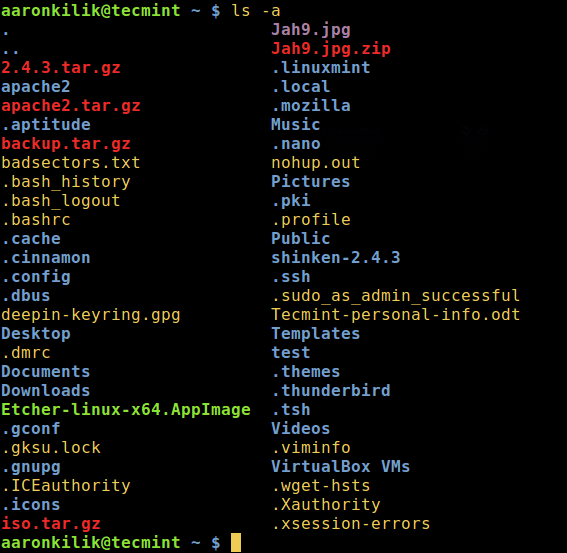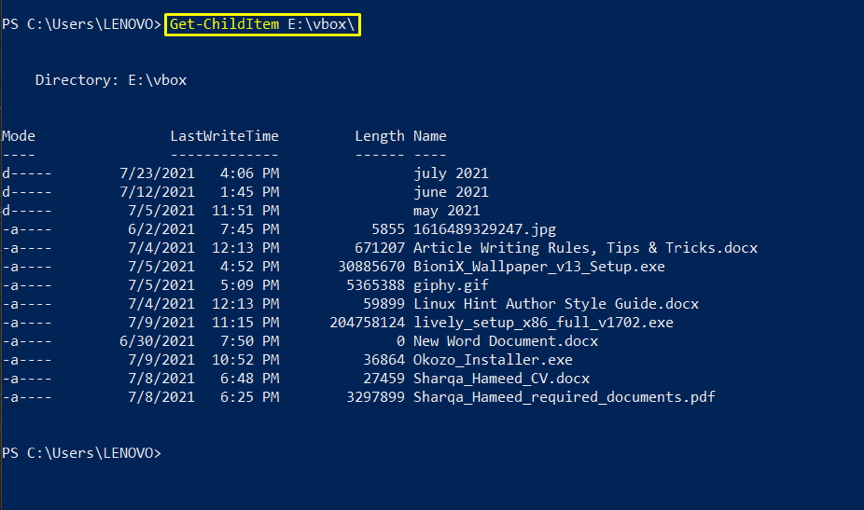

With the help of this command, we can find the properties of file such as file size, permissions, modified date, etc. This command is used to display the information of files and filesystem. If you want to search only the directories and skip the file names use the -type d option as shown below.įind / -type d -name "apk" -ls 5.
#List directory contents c how to#
How to List only Directories Using Find Command The dot (.) symbol indicates the current working directory. To display all files which are present in the current working directory, use the following command. You can search files by name, extension, group, modification date, permissions etc. The find command helps us to look up for files for which we know only the approximate names.In simple words the find command searches for a file in the current working directory and recursively through the subdirectories that matches the given search criteria.

The output will display both files and directories. To display the contents of current working directory run the following command. It will display the given parameters in the specified format or execute the command depending on the option specified. This command is used for formatting and printing text. In the above output, d indicates directories. To print the detailed information of each file and directory use the -l command-line option. The forward slash in the above output indicates the directory and others indicate files. The dir command is used to list the contents of the directory. This entry was posted in Lesson by dgookin. In next week’s Lesson, I discuss how to differentiate between standard files and directory entries. The other items are files, though I know that sto is another directory. represent the current and parent directories.
#List directory contents c code#
For each item found, int variable files tracks its sequential number (which is part of this code and not part of the file system) and entry->d_name prints its name: File 1. The loop spins as long as the value returned from readdir() isn’t NULL. This code is the same as the previous example, with a while loop inserted to read the directory entries. The following code demonstrates how the d_name structure member can be used when reading a directory: A key member worthy of access is d_name, which represent the directory entry’s filename. The dirent structure is customized based on the file system. This function is called repeatedly until NULL is returned, indicating no further entries are available in the directory. Structure variable dirent is a pointer that contains information about a specific entry read from a directory, referenced by the DIR pointer used in the readdir() function. Here’s how it’s prototyped, also in the dirent.h header file: To expand the program and make it useful, the readdir() function is added.

Opening and closing a directory is boring, but I like to build upon code when presenting a new concept. Otherwise a simple string is output and the directory is closed in Line 18. The DIR pointer variable folder acts as the directory handle for the opendir() function in Line 8. In the following code, the current directory (abbreviated as. Use the errno global variable to further examine the issue when -1 is returned. The function requires a DIR pointer ( dirp, heh) and returns 0 upon success, otherwise -1. The value returned is a DIR pointer, similar to the FILE pointer returned by fopen().Īfter opening the directory and doing whatever, you use the closedir() function to close the directory: The function requires a string argument, a name or path to a directory. It’s prototyped in the dirent.h header file as: To access a directory, use the opendir() function. These details are accessible when you use the proper C language functions. The directory holds all that information, such as the file’s physical location, its name, timestamps, permissions, and other trivia. The media’s file system determines how the files are organized and accessed. Special C language functions are available to read and manipulate directories, which helps your programs manage files and do other fun file stuff.Ī directory is really a special type of file, a data container that acts as a database referencing other files stored on the media. Before then, it was a directory, a list of files stored on media. I’m refusing to call it a “folder.” That nonsense gained popularity with the Macintosh and then Windows.


 0 kommentar(er)
0 kommentar(er)
